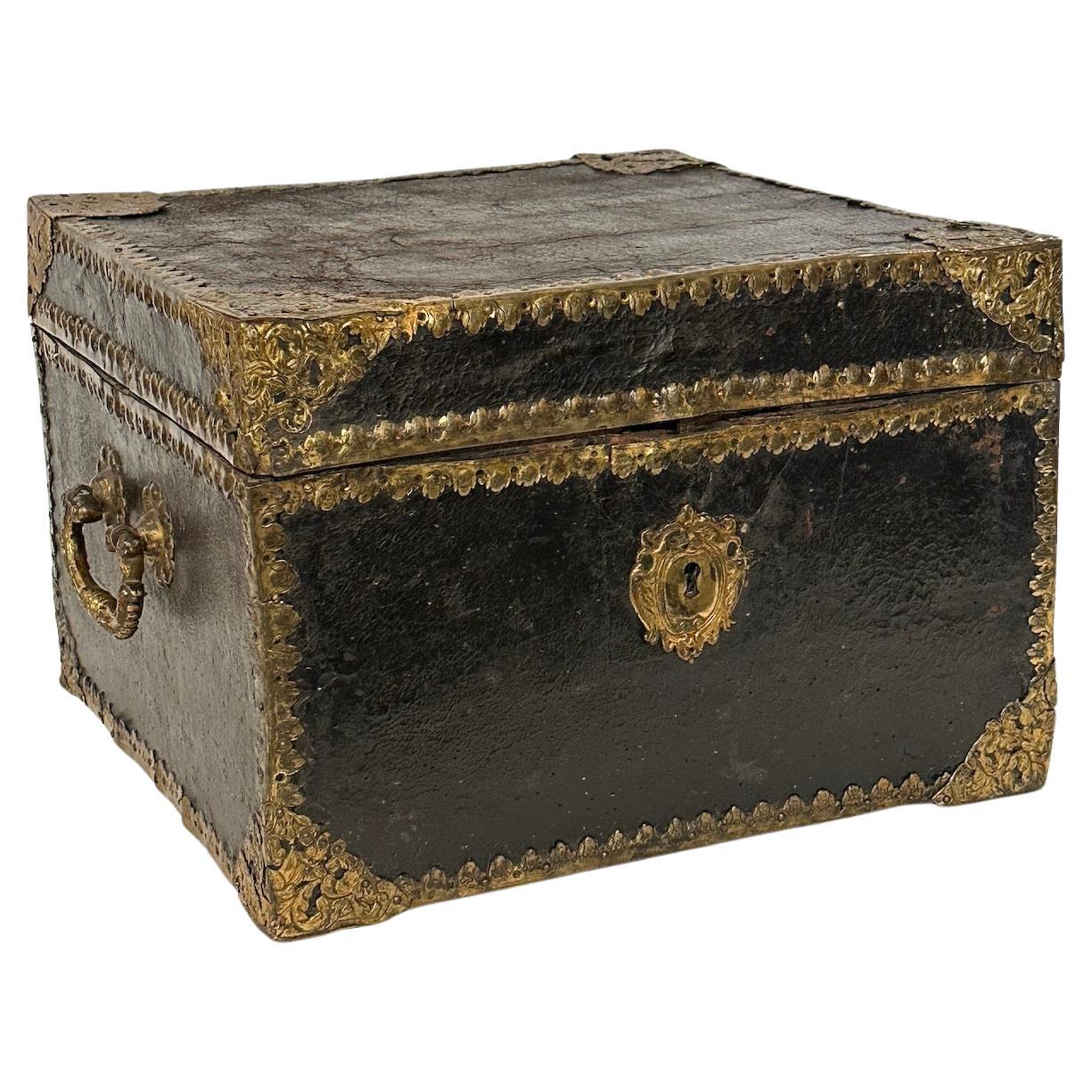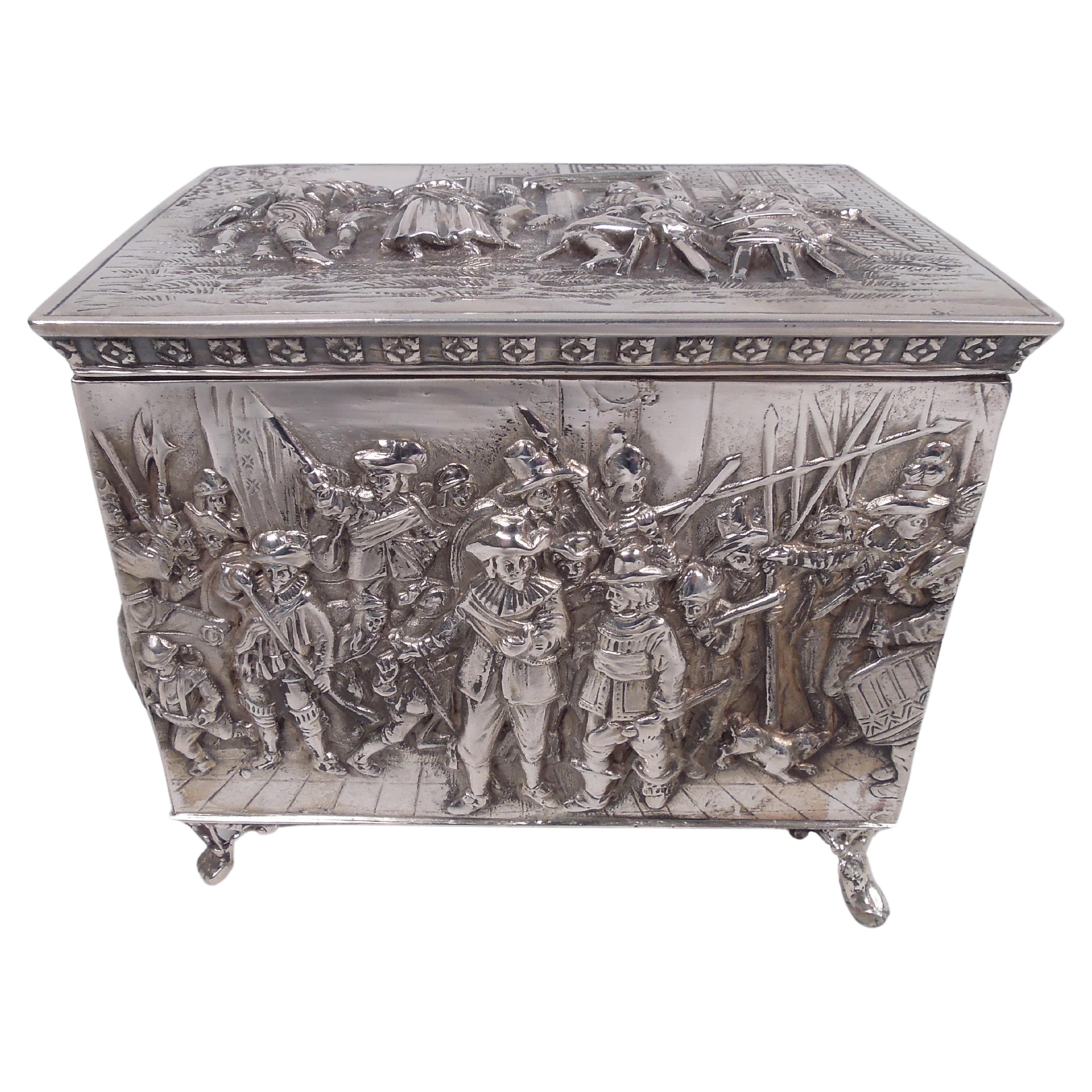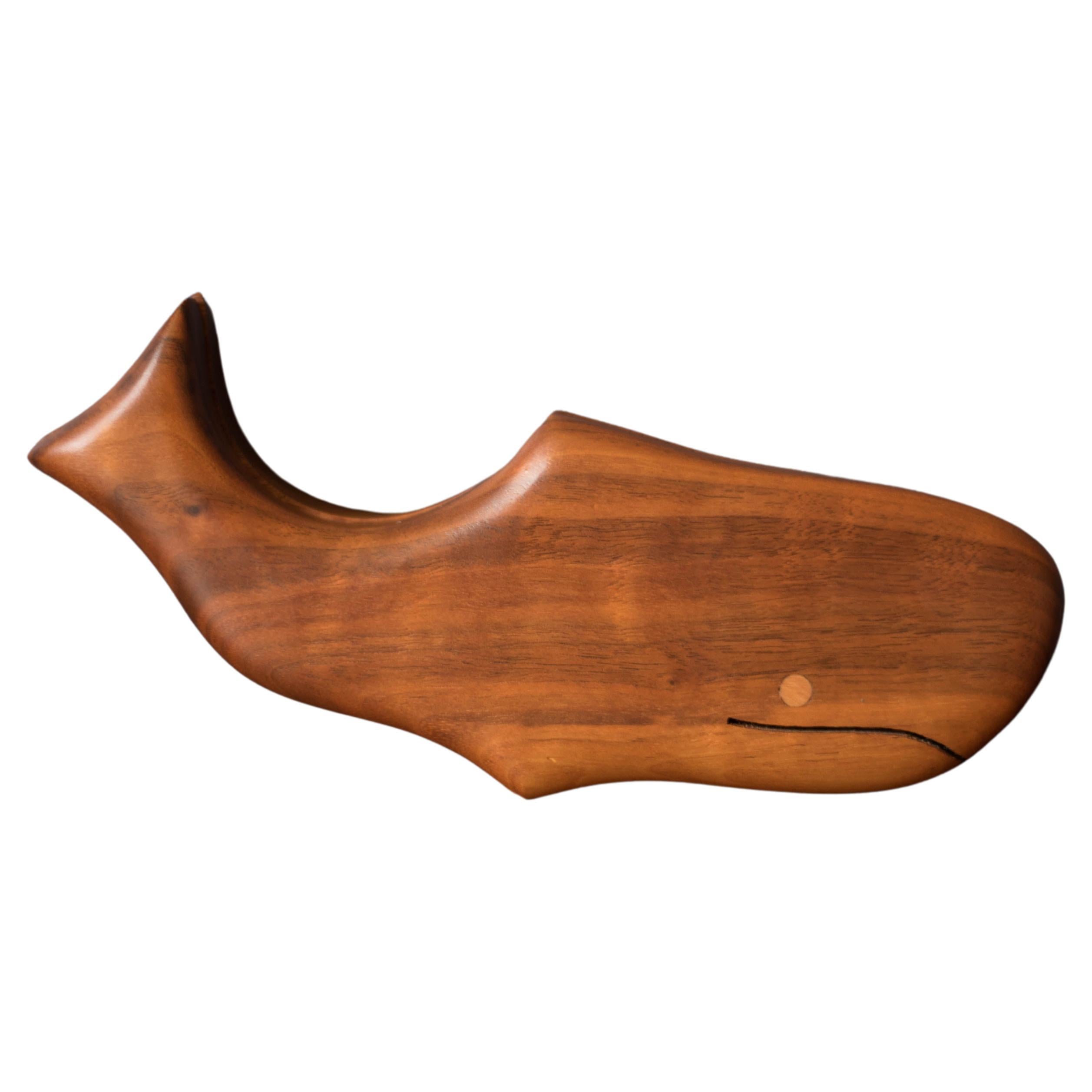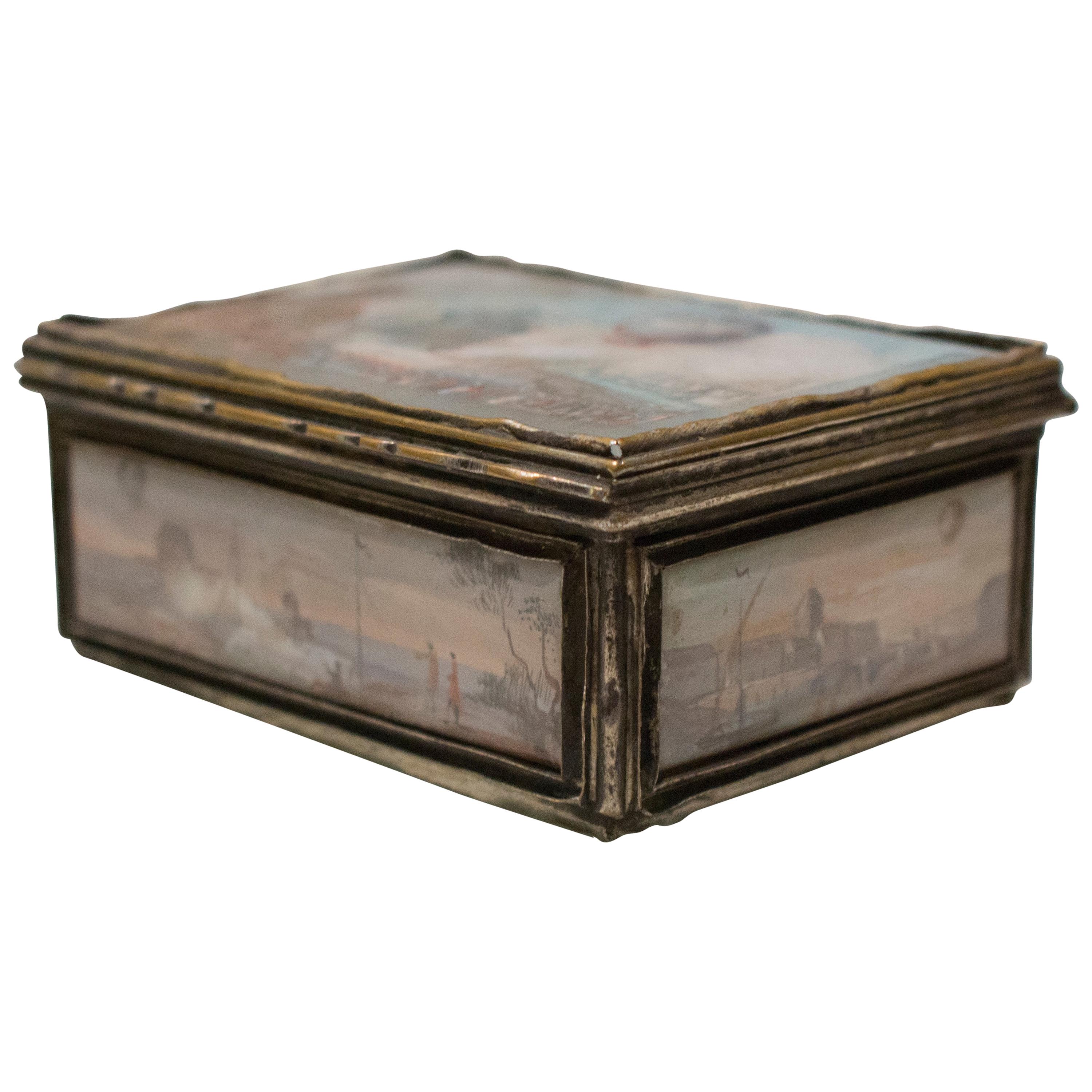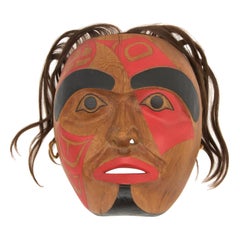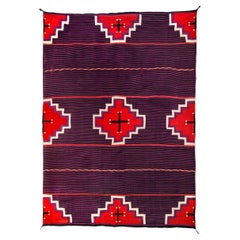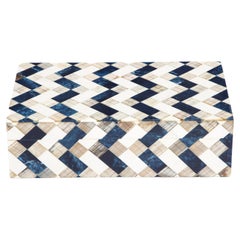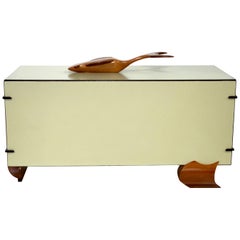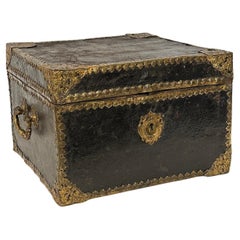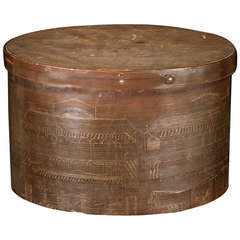
Incised Whale Baleen Box with Maritime Scene
View Similar Items
Want more images or videos?
Request additional images or videos from the seller
1 of 5
Incised Whale Baleen Box with Maritime Scene
About the Item
- Dimensions:Height: 5.5 in (13.97 cm)Width: 7.5 in (19.05 cm)Depth: 5.5 in (13.97 cm)
- Materials and Techniques:
- Place of Origin:
- Period:
- Date of Manufacture:circa 1900
- Condition:Wear consistent with age and use. Minor losses. Minor structural damages.
- Seller Location:Denver, CO
- Reference Number:Seller: 142281stDibs: LU100461226584
About the Seller
5.0
Recognized Seller
These prestigious sellers are industry leaders and represent the highest echelon for item quality and design.
Established in 1979
1stDibs seller since 2013
143 sales on 1stDibs
Typical response time: 7 hours
More From This SellerView All
- Native American Parfleche Box, Sioux, 19th Century Painted Hide PlainsBy Sioux Indian ArtLocated in Denver, COAntique Sioux (Native American/Plains Indian) Parfleche in a box form constructed of rawhide and intricately painted in an abstract design with hourglass and geometric motifs with natural pigments and red trade cloth. At the time this was created, the Sioux Indians were nomadic and are associated with vast areas of the Great Plains of the United States including present-day North and South Dakota, Minnesota, Nebraska and Montana. Authenticity is guaranteed. Box is in very good condition - please contact us for a detailed condition report. Parfleches are rawhide containers which were fundamental to the Plains way of life. Functioning essentially as protective travelling suitcases, they enabled the nomadic tribes to effectively pursue buffalo herds and migrate between seasonal camps. So critical were they to a nomadic existence that over 40 tribes are known to have historically produced parfleches. Collectively, these tribes inhabited an area which encompassed the entirety of the Plains, as well as the parts of the Southwest, the Transmontane and Western Plateau regions. Parfleches were, out of necessity, robust and versatile objects. They were designed to carry and protect within them anything from medicinal bundles to seasonal clothing or food. In fact, it was because of the containers’ robusticity and variety that parfleches earned their name in the Anglo world. Derived from parer (to parry or turn aside) and fleche (arrow), the word parfleche was coined by 17th century French Canadian voyageurs and used to describe indigenous objects made from rawhide. Despite their common utilitarian function, parfleches served as one of the major mediums through which Plains Indian tribes could develop their long-standing tradition of painting. In fact, it is in large part due to the parfleche that tribal style emerged. Even though parfleche painting developed simultaneously with beading and weaving, painting as an artistic tradition held particular importance in tribal culture. Believed to have evolved from tattooing, it had always been used as a conduit through which tribal and individual identity could be expressed. As such, many tribeswomen were deeply committed, some even religiously, to decorating their parfleche either with incised or painted motifs that were significant to them and/or the tribe. For some tribes, such as the Cheyenne, the decorative processes which surrounded parfleche production were sacred. For others, it seems that their parfleche designs shared an interesting artistic dialogue with their beadwork, indicating a more casual exchange of design motifs. This particular relationship can be seen in Crow parfleche...Category
Antique Late 19th Century American Native American Native American Objects
MaterialsHide
- Northwest Coast Mask, Native American Killer Whale 'Orca', Wood with red & blackLocated in Denver, COA carved wooden mask originating in the Pacific Northwest Coast. The design on the face is a Native American Killer Whale or Orca motif in black and red. The title, date and the arti...Category
Mid-20th Century American Native American Tribal Art
MaterialsWood, Bentwood
- 19th Century Navajo Blanket with a Nine Point Diamond and Cross with RedBy NavajoLocated in Denver, CO19th Century Navajo Blanket with a nine point diamond and cross design in red, white, black and purple, similar to a chiefs pattern with a classic banded moki background. Dimensions ...Category
Antique Late 19th Century American Navajo Indian Rugs
MaterialsWool
- Acoma Olla 'Storage Jar', Polychrome with Abstract Foliate Motif EarthenwareBy Native American ArtLocated in Denver, COAcoma Olla (storage jar), Polychrome with abstract foliate motif. Earthenware with slip glazes, dimensions measure 11 ½ inches tall and 11 inches diameter. ...Category
Antique 1890s American Native American Ceramics
MaterialsEarthenware
- 1870s Transitional Plateau Rawhide Parfleche Envelope with Geometric PatternsBy Plateau IndiansLocated in Denver, COA parfleche container in an envelope form, finely painted in an abstract design. Makes a stunning wall hanging alone or in a grouping with other parfleche or can be placed on a shelf or Stand. This was created by a North American Indian living in the Plateau cultural area - encompassing portions of what is now northern Idaho, western Montana, northeast and central Oregon, eastern Washington and southeast British Columbia. The tribes from this region include Kalispel, Flathead, Kutenai, Palus, Coeur D'Alene and Nez Perce. Parfleches are rawhide containers which were fundamental to the Plains way of life. Functioning essentially as protective travelling suitcases, they enabled the nomadic tribes to effectively pursue buffalo herds and migrate between seasonal camps. So critical were they to a nomadic existence that over 40 tribes are known to have historically produced parfleches. Collectively, these tribes inhabited an area which encompassed the entirety of the Plains, as well as the parts of the Southwest, the Transmontane and Western Plateau regions. Parfleches were, out of necessity, robust and versatile objects. They were designed to carry and protect within them anything from medicinal bundles to seasonal clothing or food. In fact, it was because of the containers’ robusticity and variety that parfleches earned their name in the Anglo world. Derived from parer (to parry or turn aside) and fleche (arrow), the word parfleche was coined by 17th century French Canadian voyageurs and used to describe indigenous objects made from rawhide. Despite their common utilitarian function, parfleches served as one of the major mediums through which Plains Indian tribes could develop their long-standing tradition of painting. In fact, it is in large part due to the parfleche that tribal style emerged. Even though parfleche painting developed simultaneously with beading and weaving, painting as an artistic tradition held particular importance in tribal culture. Believed to have evolved from tattooing, it had always been used as a conduit through which tribal and individual identity could be expressed. As such, many tribeswomen were deeply committed, some even religiously, to decorating their parfleche either with incised or painted motifs that were significant to them and/or the tribe. For some tribes, such as the Cheyenne, the decorative processes which surrounded parfleche production were sacred. For others, it seems that their parfleche designs shared an interesting artistic dialogue with their beadwork, indicating a more casual exchange of design motifs. This particular relationship can be seen in Crow parfleche...Category
Antique Late 19th Century North American Native American Native American...
MaterialsHide
- Moccasins, Antique 1880s Arapaho Native American Plains Indian, Hide with BeadsBy Arapaho Indian ArtLocated in Denver, COThis pair of 19th century antique moccasins date to circa 1880 and are constructed of native tanned hide and sewn with glass trade beads in colors of...Category
Antique Late 19th Century American Native American Native American Objects
MaterialsHide, Glass, Beads
You May Also Like
- Blue/White Incised Horn BoxLocated in New York, NYModernist graphic patterned blue and white bone box with hand incised horn tiles. Wood interior.Category
21st Century and Contemporary Philippine Modern Decorative Boxes
MaterialsBone, Horn, Wood
$525 / item - Artisan Craftsman Whale Top BoxLocated in Palm Springs, CAA handmade artisan box out of cherry and walnut. The artist Ken Gamet carved this elegant box and fashioned the wonderful whale top. The corners have splines and the interior is fini...Category
21st Century and Contemporary American Decorative Boxes
MaterialsWood
- Leather and Incised Brass Document BoxLocated in Newport Beach, CALeather and incised brass trimmed document box lined in paisley paper. Brass handles.Category
Antique 1780s French Decorative Boxes
MaterialsBrass
- Antique Document Box with Incised Concentric Motifs and Partial Opening TopLocated in Yonkers, NYAn Indian wooden document box from the 19th century with incised concentric circle motifs, metal braces and partial opening top. Discover the charm of history with this exquisite 19t...Category
Antique 19th Century Indian Decorative Boxes
MaterialsWood
- Antique Document Wooden Box with Incised Diamond Motifs and Wave PatternsLocated in Yonkers, NYAn antique Indian wooden document box from the 19th century with incised diamond motifs and wave patterns and partitioned interior. This 19th-century Indian wooden document box is a testament to the exquisite craftsmanship and rich heritage of Indian artisanship. Adorned with incised diamond motifs and undulating wave patterns, its surface tells a story of meticulous attention to detail and a deep appreciation for aesthetic form. The metal accents that punctuate its exterior not only enhance its visual appeal but also add to its structural integrity, offering a striking contrast against the warm tones of the wood. The interior, thoughtfully partitioned, speaks to the box's original purpose of safeguarding valuable documents and keepsakes. Today, it stands as a versatile decorative piece that could serve multiple functions in a contemporary home. It could be a rustic accent on a study desk, holding pens and stationery, or a unique storage solution on a hallway console for keys and small items. Alternatively, placed on a coffee table or bookshelf, it could store remotes or serve as a conversation-starting decorative object. Beyond its utility, this antique document box...Category
Antique 19th Century Indian Decorative Boxes
MaterialsMetal
- Antique German Silver Box with Olden Days ScenesLocated in New York, NYGerman 800 silver box, ca 1910. Rectangular with straight sides. Cover flat and hinged; tapering sides applied with flower head border. Embossed Olden Days scenes of merrymaking with...Category
Early 20th Century German Edwardian Decorative Boxes
MaterialsSilver
Recently Viewed
View AllMore Ways To Browse
Black Brass Box
Antique Work Boxes
Antique Work Box
Antique Work Box Boxes
Vintage Decorative Box
Black Midcentury Box
Antique Locking Box
Antique Lockable Box
Antique Lock Box
Antique Box Lock
Small Brass Decorative Objects
19th Century Silver Box
Antique Victorian Bedrooms
19th Century Box With Brasses
Box British
All Brass Box
Midcentury Wood Box
Display Boxes


